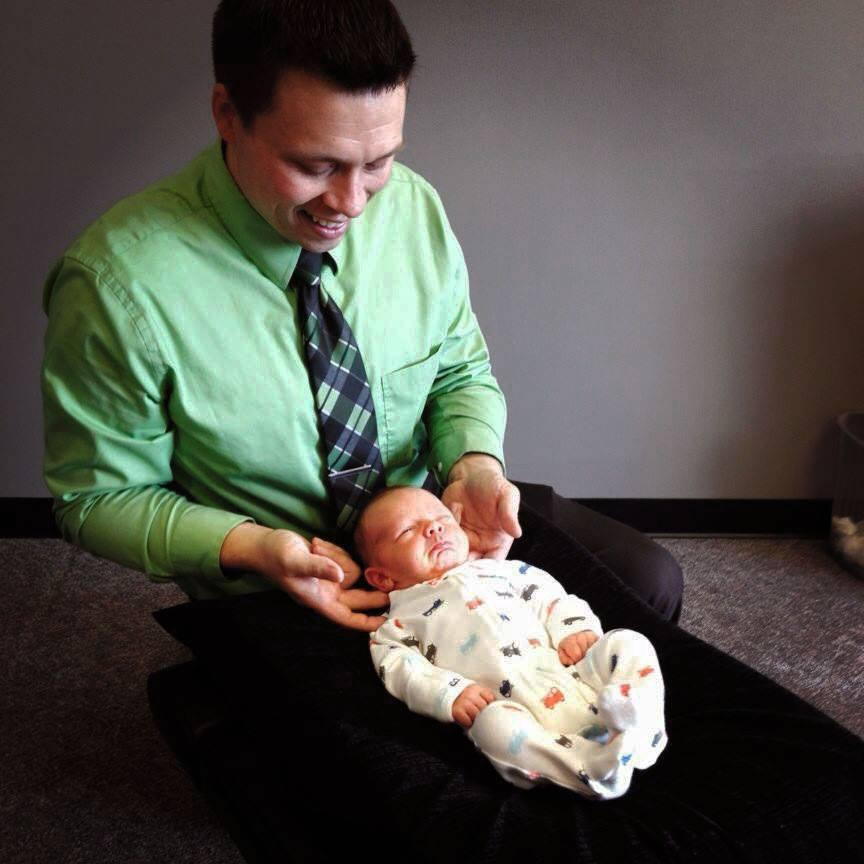

Did you know it's safe for babies to get a chiropractic adjustment too? Dr. Rob took some time to answer some common questions about why babies need to be adjusted and why it's safe.
What are some of the common misalignments in newborns?
The most common misalignments found in newborns are in the upper neck. The contractions of a natural delivery process puts a lot of pressure on the head and neck. The neck can also be affected by a c-section where the baby is often pulled by the base of the head and neck through the incision during the delivery process. The next most common misalignments are found in the midback and sacrum and it is believed to be related to mild stresses on the spine because of the arced or curved "fetal position" while rested head down in the womb.
What symptoms should parents look for (i.e. fussiness, digestive issues, etc.)?
Parents often notice excessive fussiness, difficulty with feeding and/or spitting up that is not corrected with a change in nutrition (example moms who are breastfeeding changing their diet or a change in baby formula) when the baby needs an adjustment. Also, recurrent bouts of constipation, or a change in posture (head tilt, torticollis, inequality in arm or leg movement or body position, unable to look in a particular direction, etc.) are signs that a baby needs an adjustment.
What is the proper posture when nursing a baby?
Cradle, cross cradle, football hold and side lying are a few great positions for the baby while nursing or feeding a bottle. A proper feeding position won't cause any stress on the body for the mom or baby. The most important thing to remember is for the mom to bring the baby to her, as opposed to the mom leaning towards baby. This rounds moms back and shoulders and can create problems leading to unnecessary pain.
How often should a newborn get adjusted?
This varies greatly depending on condition and overall health. It's my belief that every baby should be checked after birth to ensure all the stresses and strains of labor and delivery are minimized and their body is as healthy as possible as they begin life. For a baby without obvious concerns, one adjustment early in life may be enough until they become more mobile with rolling, crawling, walking, etc. when bumps and bruises become more common and can create the need for another check up. On the other hand, with a significant issue a baby may need a couple visits per week to get back on the right track.
What are some misconceptions around getting your baby adjusted?
A huge misconception is that babies receive the same types of adjustments as adults. Most pediatric adjustments involve no twisting, popping or cracking and are delivered using very gentle pressure. Most often the finger tip of the doctor is used to hold a gentle sustained pressure to accomplish the correction. Many babies even sleep through their adjustment. Have you notices a "pop" or two in the baby's back when you gently pick them up? Things move and correct very easily with how relaxed the muscle tone is in a newborn.
I'm always open to discussing questions openly and honestly. Both of my kids were adjusted shortly after birth and I would have never adjusted them if there were any concerns or negative impacts. I only recommend to patients what I would do for my own children.
